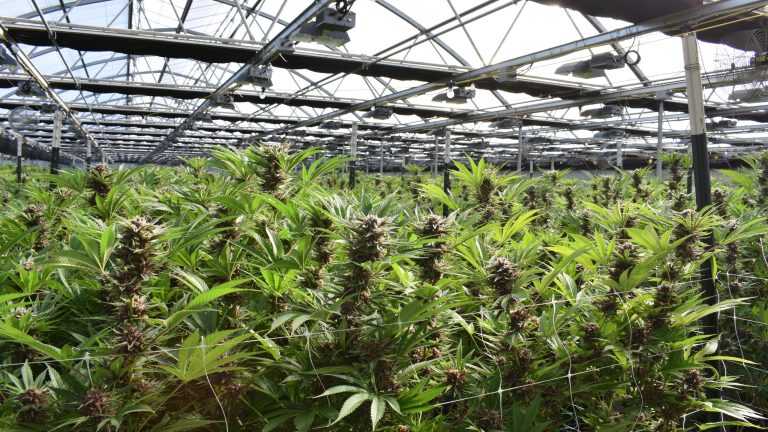As we’re within the narrative to legalize the leisure and medicinal use of Hashish, questions just like the hazard of Hashish it will probably trigger to the setting are actually on its dialogue. Hashish farming wants vitality and water to maintain it. Nonetheless, the extreme use of this provide, different malpractices, and Hashish waste may cause extreme issues like water diversion, air pollution, soil erosion, and excessive vitality consumption.
Is CBD good for glaucoma?
What are the environmental impacts of hashish cultivation?
Individuals are actually fascinated by rising Hashish each for medical and leisure use. Nonetheless, the drawbacks that have an effect on the setting are inevitable. Some identified environmental impacts of cultivating Hashish are the next:
Water Diversion
Growers know that Hashish is a water-intensive crop. On common, they want 22.7 liters (6 gallons) of water per day throughout the rising season from June to October, which can final for about 150 days.
The excessive water demand for cultivating Hashish results in the seek for extra water sources. Thus, leading to water diversion. It occurs once we switch water from one watershed to a different to fulfill irrigation necessities. Regardless of fixing the scarcity downside for Hashish cultivation, water diversion will result in different points reminiscent of decreased flows and dewatered streams. These points will affect different crops that want water additionally to develop. Other than that, it will probably additionally have an effect on wildlife reminiscent of fish and amphibians. The decreased circulation is harmful for fish like salmonid fish since they need to stay in a clear, chilly, and applicable water circulation.
Water Air pollution
One other environmental affect of cultivating Hashish is when water high quality deteriorates. To guard Hashish, growers use pesticides reminiscent of herbicides, pesticides, fungicides, nematode, and rodenticides. These chemical substances make their means into the water, inflicting dangers to the water setting.
Polluted water contaminates soil, floor water, and groundwater. These chemical substances might put people in peril by means of the meals chain. As well as, it can additionally have an effect on different irrigated crops and will threat them to groundwater contamination and poisoning from close by our bodies of water.
Right this moment, the hydroponic system has develop into extraordinarily standard with cultivators. This method would require 10% much less water than conventional cultivation and doesn’t use soil. It could sound innocent to our pure assets. Nonetheless, it might additionally pose a hazard and contaminates water.
The hydroponic system requires a spread of important vitamins like nitrogen, sulfur, zinc, phosphorus, and potassium. When the water used within the hydroponic system is discarded, it might direct to streams, lakes, and different water techniques. Thus, inflicting a hazard to our ecosystem. It may possibly trigger extra phytoplankton and algae blooms that may deplete oxygen ranges and launch toxins to our surroundings.
Soil Erosion
Hashish is recommended to trigger soil erosion. Soil erosion occurs when the highest layer of soil is misplaced or eliminated due to rain, wind, deforestation, and different human actions. Slopes are liable to erosion when cleared and cultivated. Thus, Hashish may cause soil erosion, particularly when planted on steep slopes.
On the brighter aspect, Hashish is certified as phytoremediation of contaminated soils. Phytoremediation is a plant-based method to scrub up soil, air, and water contaminated by hazardous components. Hashish is thought to have the power to soak up heavy metals from substrate soils and retailer them in its tissues. Additionally, Hashish sativa can soak up lead and calcium from soils.
Air High quality Difficulty
Hashish is thought to have a compound known as terpenes that make them fragrant. Other than that, terpenes additionally kind Risky Natural compounds (VOC). It’s deduced that terpenes can double the speed of VOCs within the ambiance. It turns into alarming since VOC interacts with different pollution to create ozone, a harmful poisonous fuel. VOC from Hashish farming could make greater than 2,000 metric tons of ozone per 12 months from the Hashish market alone.
Excessive Power Consumption
Rising Hashish indoors makes use of plenty of vitality. Based on the info in america, it covers 1% of complete electrical energy use annually. It’s equal to each pc in each dwelling and condo in america yearly.
Our homes devour electrical energy 24 hours a day, primarily with lights and followers. In 2015, a family in Boulder County, Colorado, consumed 630 kilowatt-hours (kWh) of electrical energy per thirty days. Seven occasions of this common family electrical energy consumption is the consumption of a 5,000 sq. ft. indoor develop facility. In the identical county, it’s discovered that it makes use of 41,808 kWh of electrical energy per thirty days.
Additionally, in Canada, rising Hashish wants extra vitality all year long due to its harsh winter. Thus, high-intensity gentle bulbs are required to plant Hashish indoors. For lighting fixtures to work, they want heating and air flow techniques, which require eight occasions the vitality per sq. foot of a typical retail constructing.
Based mostly on the Northwest Energy and Conservation Council (NPCC) report, Hashish services can devour 2,000 to three,000 kWh per pound of product. The lighting requirement it wants is equal to hospital working rooms, the place lights are 500 occasions stronger than a really useful gentle stage for studying.
How does Hashish waste affect the setting?
Hashish waste can both be hazardous or non-hazardous. Non-hazardous waste contains discarded plant supplies and Hashish merchandise. However, hazardous waste contains extraction solvents, contaminated laboratory trash, vape pen powered by batteries, and lighting gear.
Hazardous waste is harmful to our surroundings. These wastes can contaminate landfills, pollute water our bodies, and launch dangerous VOC into the ambiance. Think about the issue it might trigger to our surroundings when individuals throw these dangerous wastes and make their means into landfills. Particularly when dumped in excessive portions, it can trigger a extreme downside to our ecosystem.
What’s the greenest method to cultivating Hashish?
A number of impacts are identified relating to cultivating Hashish. Its results circle again to the setting and people who rely upon the pure assets it will probably provide. There are methods to mitigate the destructive affect of Hashish farming. These options could make Hashish cultivation extra sustainable:
- Undergo the authorities checklist of all farm chemical substances used to develop the
irHashish to guarantee that chemical substances use are secure to the setting. - Make a plan for monitoring and controlling hazards that Hashish farming might carry to the setting.
- Make the most of pure rainwater and effectively develop lights to domesticate Hashish.
- Reuse Hashish soil as an alternative of disposing of them after harvest.
- Reuse Hashish containers to reduce waste.
- Filtration, conservation, reclamation, and correct waste administration hold carbon footprints to a minimal.
The put up Is Hashish farming dangerous for the setting? appeared first on Weed-Sensible.






